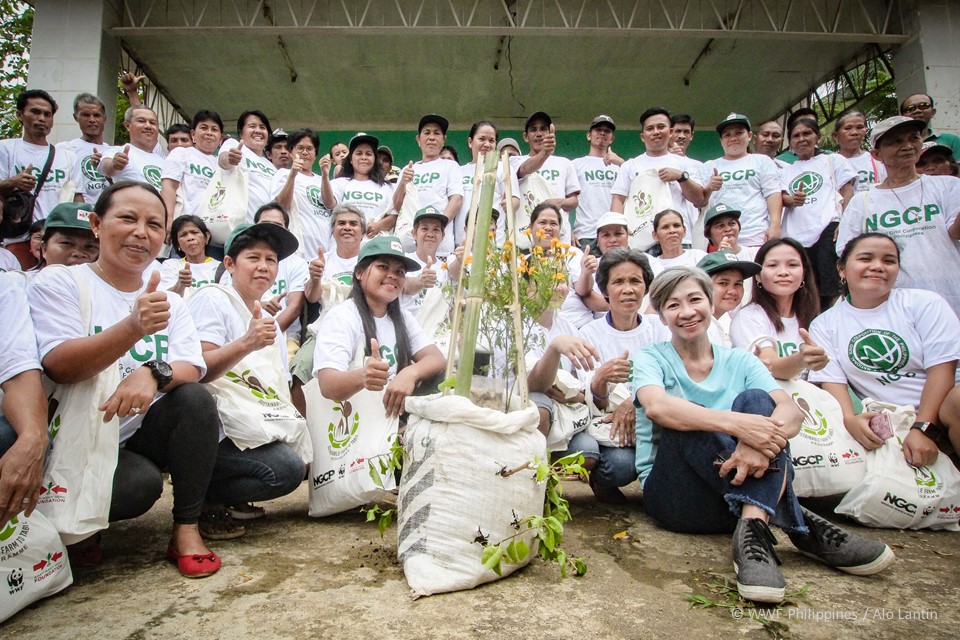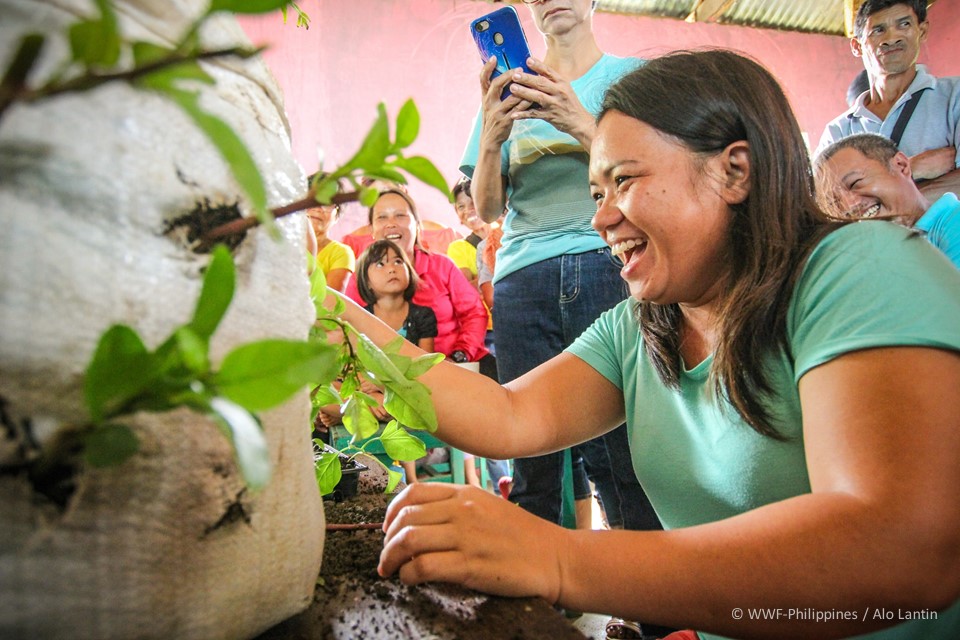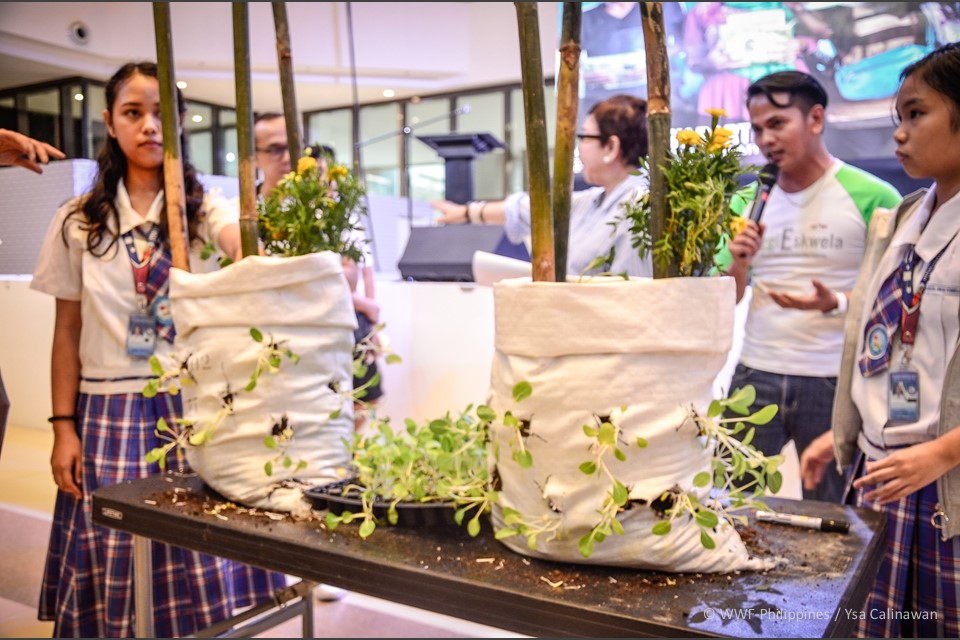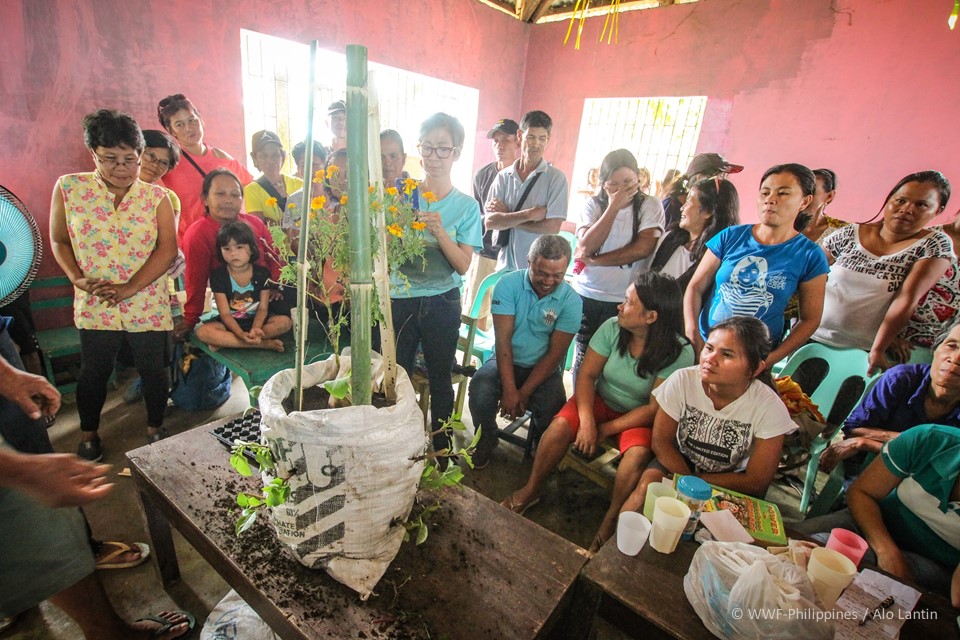These Sack Gardens Are Reshaping How We Think About Farming
November 2019

Community members from Kauswagan, Negros Oriental, stand around their newly-made sack garden.
Photograph © Alo Lantin / WWF-Philippines
When you think of farms, you think of row upon row of crops propped up side by side. Flat land stretched out for hundreds of acres. Between each plot runs a gutter for irrigation. Ever since the dawn of civilization, farming has taken the same form, with the occasional modification to account for hills and mountain slopes.
But what if there were another way to farm? These new sack gardens prove that we might not need that much land to farm with after all.

One of the community mothers plants seedlings through holes cut into the sides of the sack. These sack gardens bring space-saving verticality to agriculture where other, more conventional farming methods require hectares of flat land. Photograph © Alo Lantin / WWF-Philippines
The World Wide Fund for Nature (WWF) Philippines has been rolling out its latest low-input agricultural technology to rural and urban communities alike all across the country. Developed by technology partner East-West Seed Foundation, these sack gardens have introduced many farmers to a brand new way of thinking about their crops.
“The idea behind these sack gardens is to have fresh vegetables available at the household level. This will contribute to improving vegetable consumption in the long run,” says East-West Seed Foundation Executive Director Crisanto Sabino.
Each sack garden is easy to put together. Heavy rocks are placed inside a rice sack to weigh the garden down. A bottle is inserted in the middle to provide drip irrigation to the garden, before soil medium and fertilizer is shoveled atop the rocks. Holes are cut along the side of the sack, where seedlings are then planted. Finally, wooden trellises are placed into the sack garden to provide additional support to the structure, as well as a guide for vine plants to latch on to and grow along.
“We want to optimize the outputs of farming. Each sack garden has space for a main crop, around the edges, as well as a secondary crop, like a vine plant, that grows out the top,” adds Sabino. An open top also allows for crop diversification – with the addition of the right, aromatic plants, the sack garden can be kept free of harmful pests.

Sack gardens on display. Each sack garden allows space for one main crop and another secondary crop, allowing for diversification and strategic farming. Photograph © Ysa Calinawan / WWF-Philippines
What are the practical benefits to growing farms vertically? WWF-Philippines Sustainable Food Systems Project Manager Monci Hinay shares his opinion on what he believes to be a game-changer in food security.
“We introduced these sack gardens because we noticed that in our communities, even in the most rural ones, most farmers don’t own their own land. The only land they really own is the land they’ve built their houses on. What we’re doing is really about backyard gardening,” says Hinay. One of the biggest causes of hunger is a lack of reliable access to food. By teaching consumers to grow crops in their homes with little input on their part, they then have direct access to a steady supply of food.
“Limited spaces need wider mindsets. That’s the battle cry of urban container gardening. We have limited space, so we have to be more innovative in our approach.” For Hinay, the point of having low-tech technologies like the sack garden is for anyone to have access to food, no matter where or how they live.

A community looks on at their new sack garden. Food security comes to urban spaces through this low-tech, low-input technology. Photograph © Alo Lantin / WWF-Philippines
“If you have a lot of land, then go and put up a big farm. The point here, though, is that having no land doesn’t have to be a reason for you not to farm. You can still grow your own food,” concludes Hinay. With the challenges of a food-insecure future growing ever more real, it is necessary to explore new ways to think about agriculture. Come and support WWF-Philippines, and help us create a future where everyone has enough to eat.
For more information, please contact:
Ms. Pam Luber
Communications Manager
pluber@wwf.org.ph
